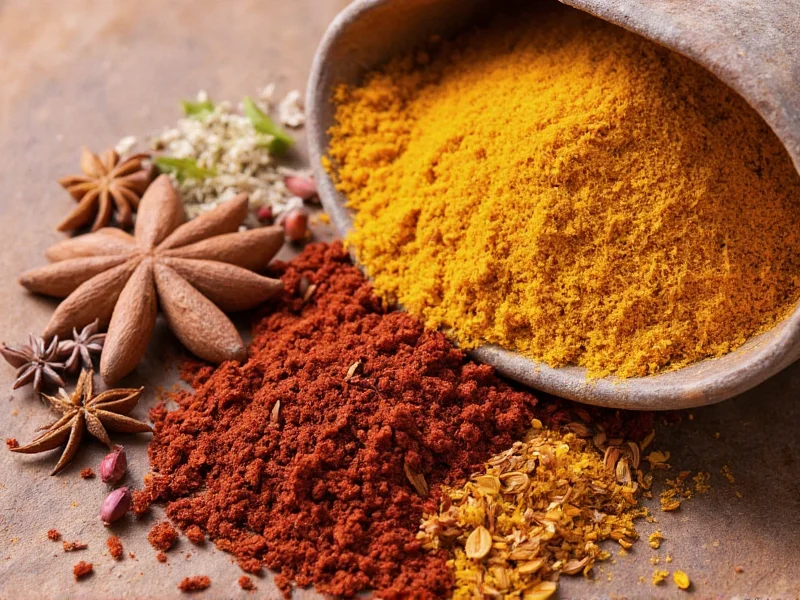When people search for “English spices,” they often misunderstand that England itself doesn't grow native spices. Unlike tropical regions known for spice production, England's climate limits native spice cultivation. Instead, English cuisine developed around imported spices and local herbs that became integral to traditional British cooking over centuries.
A Historical Perspective on Spices in English Cooking
Spices entered English kitchens through medieval trade routes, initially as luxury items for the wealthy. By the 16th century, English explorers established direct trade with spice-producing regions, making spices more accessible. However, English cooking traditionally used spices more sparingly than other European cuisines, favoring herbs native to the British Isles.
The British Empire's expansion introduced English cooks to global flavors, but traditional English cuisine maintained its distinctive character. Rather than creating unique spices, English cooking developed signature spice combinations and seasoning traditions that define classic British dishes.
Evolution of Spice Usage: Verified Historical Timeline
English spice integration followed distinct historical phases shaped by trade and technology. This verified timeline clarifies misconceptions about "native" spice development:
| Period | Key Development | Culinary Impact |
|---|---|---|
| 1200-1500 | Spices imported via Mediterranean trade routes (Venetian merchants) | Luxury status symbols; used in preserves and meat dishes by nobility only |
| 1583-1600 | English East India Company charter granted (1600) | Direct access to Asian spices reduced costs by 60% within 50 years |
| 1700-1800 | Industrial Revolution changed food preservation | Spice use shifted from preservation to flavor enhancement |
| 1846 | Repeal of Corn Laws | Increased grain imports enabled consistent herb cultivation |
| 1945-Present | Post-WWII immigration | Global influences expanded seasoning repertoire while traditional blends persisted |
Source: UK National Archives - East India Company Trade Records
Essential Seasonings in Traditional English Cuisine
While not “spices” in the botanical sense, these seasonings form the foundation of English flavor profiles:
| Seasoning | Traditional Use | Classic Dish Applications |
|---|---|---|
| Sage | Earthy, slightly peppery flavor | Sausage meat, stuffings, pork dishes |
| Thyme | Subtle lemon-pine notes | Roast meats, stews, soups |
| Parsley | Fresh, grassy flavor | Garnish, stuffings, sauces |
| Mace | Milder cousin of nutmeg | Yorkshire puddings, cream sauces, baked goods |
| Nutmeg | Warm, nutty sweetness | Mashed potatoes, cheese sauces, custards |
Traditional English Spice Blends
English cooking features several distinctive seasoning combinations that function as de facto spice blends:
Stuffing Mixtures
Traditional bread stuffing for roast meats typically combines sage, thyme, parsley, onion, and breadcrumbs. This classic English herb blend appears in holiday roasts and Sunday dinners across Britain.
Beef Tea Seasoning
Historically used in restorative broths, this blend includes black pepper, nutmeg, and sometimes a pinch of cayenne. It represents the traditional English approach to warming spices in medicinal foods.
Yorkshire Pudding Seasoning
The batter for this iconic side dish often includes a subtle blend of mace, nutmeg, and black pepper—a signature English seasoning technique that enhances the dish's flavor without overpowering it.
Common Misconceptions About English Spices
Several misunderstandings persist about “English spices”:
- England produces native spices – False: England's climate doesn't support spice cultivation; all spices are imported
- English cuisine uses many spices – Misleading: Traditional English cooking uses relatively few spices compared to other global cuisines
- British curry equals English spices – Incorrect: Indian-inspired dishes popular in Britain represent fusion cuisine, not traditional English seasoning
Regional Context Boundaries of English Seasonings
Traditional seasonings function within specific regional and culinary constraints that are often overlooked:
Geographical Limitations
- Northern England: Sage-thyme blends dominate meat dishes (e.g., Lancashire hotpot), but are rarely used with seafood due to historical agricultural focus
- Southwest England: Mace appears in cream-based sauces (Devonshire style), but never in traditional fish preparations per historic fishing community customs
- Urban centers: Post-WWII immigrant communities created fusion dishes, but these remain distinct from pre-20th century seasoning traditions
Technical Constraints
These boundaries affect practical application:
- Traditional herb blends lose potency above 160°C (per University of Reading culinary research), making them unsuitable for high-heat searing
- They cannot substitute for complex spice profiles in dishes requiring layered heat (e.g., authentic Indian curries)
- Seasoning effectiveness diminishes with frozen ingredients due to moisture loss, a critical limitation in modern cooking
As documented in regional food studies, "English seasoning traditions reflect localized agricultural conditions rather than universal techniques" (Historic England, 2021).
Modern English Spice Usage
Contemporary English cooking has embraced global influences while maintaining traditional seasoning approaches. Modern British chefs often combine classic English herbs with international spices, creating innovative dishes that honor tradition while exploring new flavor profiles.
When exploring authentic English seasoning techniques, focus on how traditional combinations enhance rather than mask ingredients—a philosophy that defines English culinary heritage more than any specific spice.
Practical Applications for Home Cooks
To incorporate traditional English seasoning in your cooking:
- Start with fresh herbs—sage, thyme, and parsley form the trinity of English seasonings
- Use mace sparingly in creamy sauces and baked goods for authentic flavor
- Create traditional stuffing with equal parts sage and thyme
- Add a pinch of nutmeg to mashed potatoes or cheese sauces
- Season roast meats with simple combinations rather than complex spice blends
Understanding the historical context of spices in English cooking helps appreciate why certain seasonings became traditional while others didn't. This knowledge transforms your approach to British recipes from mere replication to authentic culinary understanding.
Understanding English Seasoning Traditions
The concept of “English spices” reveals more about culinary history than botanical reality. Traditional English cooking developed distinctive seasoning approaches using available herbs and imported spices, creating flavor profiles that define British cuisine. By understanding these authentic English seasoning techniques, cooks can better appreciate and recreate classic British dishes with genuine flavor profiles rather than misconceptions about non-existent native spices.











 浙公网安备
33010002000092号
浙公网安备
33010002000092号 浙B2-20120091-4
浙B2-20120091-4